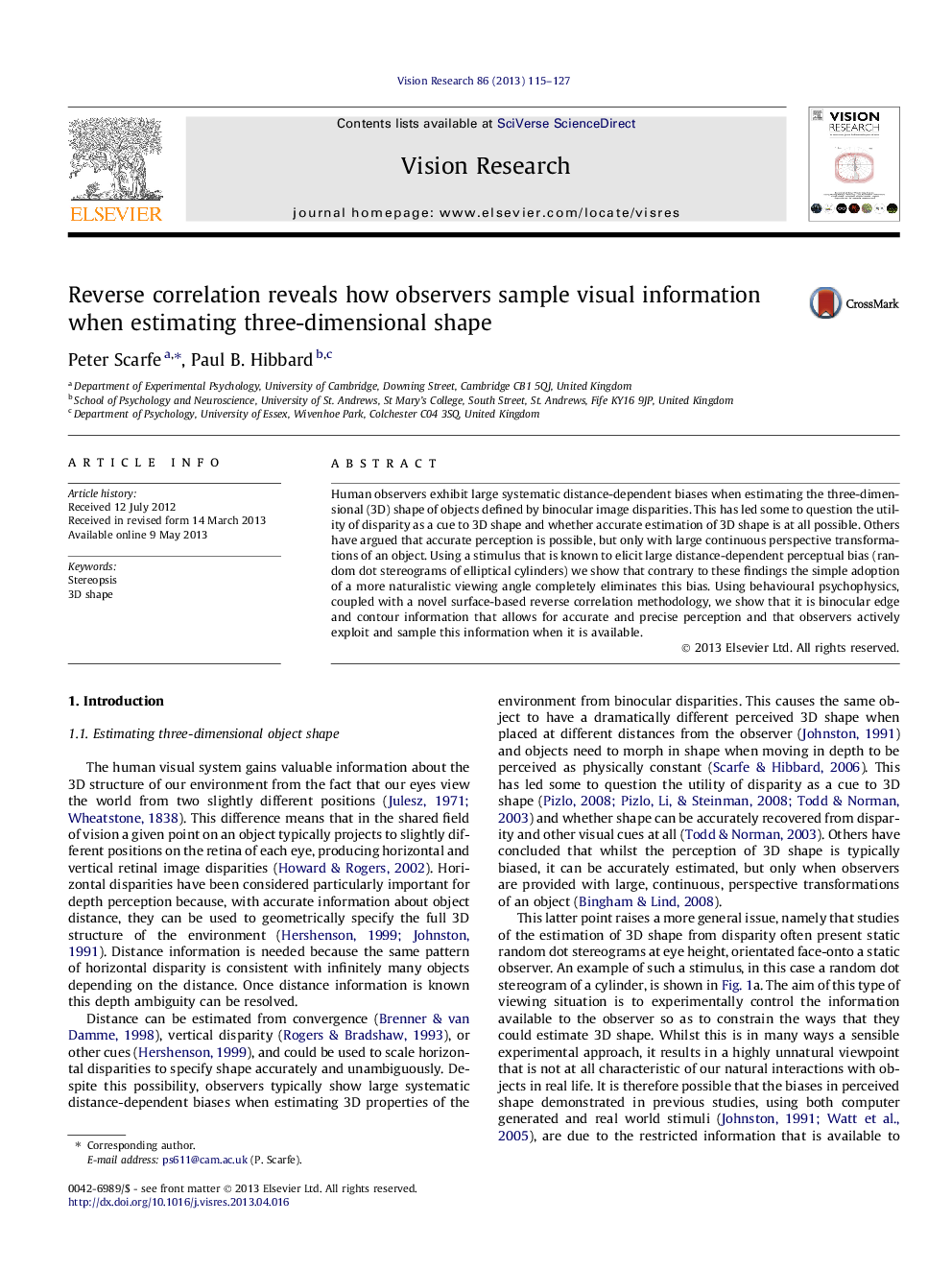| کد مقاله | کد نشریه | سال انتشار | مقاله انگلیسی | نسخه تمام متن |
|---|---|---|---|---|
| 4033807 | 1603208 | 2013 | 13 صفحه PDF | دانلود رایگان |

• Previous research has shown that observers make systematic errors when estimating 3D shape from disparity.
• Here we show that observers can accurately judge 3D shape if the edges and contours of an object are visible.
• Reverse correlation shows that observers exploit actively exploit edge and contour information when judging 3D shape.
• Distortions of shape demonstrated previously are due to the unnaturalistic viewpoint used to investigate performance.
Human observers exhibit large systematic distance-dependent biases when estimating the three-dimensional (3D) shape of objects defined by binocular image disparities. This has led some to question the utility of disparity as a cue to 3D shape and whether accurate estimation of 3D shape is at all possible. Others have argued that accurate perception is possible, but only with large continuous perspective transformations of an object. Using a stimulus that is known to elicit large distance-dependent perceptual bias (random dot stereograms of elliptical cylinders) we show that contrary to these findings the simple adoption of a more naturalistic viewing angle completely eliminates this bias. Using behavioural psychophysics, coupled with a novel surface-based reverse correlation methodology, we show that it is binocular edge and contour information that allows for accurate and precise perception and that observers actively exploit and sample this information when it is available.
Journal: Vision Research - Volume 86, 28 June 2013, Pages 115–127